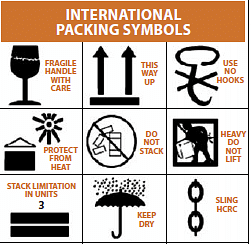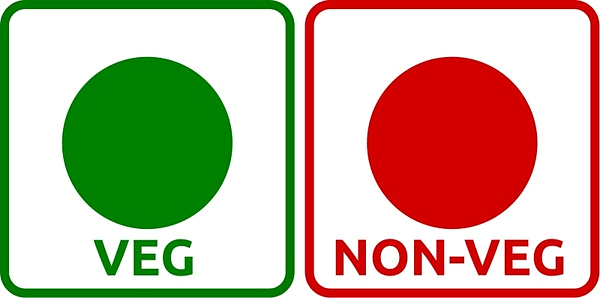ICAI Notes- Introduction - Common Business Terminologies | Business and Commercial Knowledge (Old Scheme) - CA Foundation PDF Download
Learning Outcomes
After studying this chapter, you will be able to:
- Familiarise yourself with the growing lexicon (the vocabulary) of Business & Commercial Knowledge.
- Define the terms used in the areas of Finance, Stock & Commodity Markets, Marketing, Banking, and Others.
- Relate better with the terms used in business/ economic newspapers and magazines.
- Use the BCK terms in your academic/ professional conversations and communications.

Introduction
- The domains of Business and Commercial Knowledge (BCK) are ever expanding and evolving and BCK draws its vocabulary from various disciplines.
- In the first chapter, we spelt the strategies for keeping oneself updated with the BCK. In the preceding chapters, we have drawn on BCK lexicon for elaborating various concepts. In this summing up chapter, we profile the terms used in those chapters and many more in the BCK lexicon. The format of the chapter is more of a glossary/BCK Dictionary.
- However, we learn better when we contextualise these terms and use these in our conversations and communications. Thus, we encourage you to read more, think much and write and speak these terms for better comprehension of the world of business. This will help you in future.
Business - Many Facets of The Same Reality
In Chapter-1 we also saw that how a business may be studied from a technical (Production/Operations), commercial (marketing), economic (financial), social (HR) and political (Legal and Administration) perspectives. Each of these perspectives may be regarded as different windows of the same room. For a holistic awareness of business, we need to know about all the windows, albeit depending upon our need, we may just open one window at a time. Recall, we called business as an eclectic field of study?
Perspectives and Reality
 Perspectives are useful-each one in its own right. However, we should not be blinded by our own expertise. For example, to an accountant the firm is just a little more than a sum of Asset, Liabilities, Capital, Revenue and Expenses. And, to a marketing professional, it is all about firm's products, pricing, place (distribution) and promotion. In reality however, the firm is both an accounting entity and a business marketing its products. We need to follow an eclectic approach that is not blinded by or blind to any perspective. |
All these perspectives have a lexicon of their own- the jargon (special words or expressions that are used by a particular profession or group).
Technical Facet
Technically a business may be viewed as a transformation process- a huge machine- wherein inputs are subjected to the entire process for generating output. Now, this interpretation of business can open us to a host of terms in the BCK lexicon. A business’s inputs are the various commodities including industrial raw materials- minerals and metals as well as agricultural commodities (especially for agro-industries). It is therefore desirable to know about terminologies pertaining to commodity markets.
Commercial Facet
Commercially, business is all about marketing management, that is, planning, organising, directing and controlling a firm’s relationships with its customers/ markets. Essentially it comprises the famed Ps of marketing- Product, Price, Place and Promotion for goods marketing and the additional Ps of People (Sales force’s) connects with the customers, Physical Evidence e.g. hygiene in a hospital or a restaurant and Processes e.g. customer service time, que management, etc. for services marketing. Here, BCK would also
involve the awareness of terminologies pertaining to consumer markets –domestic as well as international.
Financial Facet
From an economic, accounting and financial perspective, business implies investment and the associated returns and risks. Thus, this facet includes sources of business finance and the state of the development of financial markets; maintenance of accounts, preparation of Profit and Loss Account and the Balance Sheet. It involves estimation of cost, revenue and profits and the periodic reporting of the firm’s performance.
HR Facet
From an HR perspective, a business organisation is all about people occupying different job positions and performing their respective roles, responsibilities and functions. People are said to be an organisation’s most precious assets, albeit these assets do no figure in its balance sheet. Their competencies, character, individual motivation and collective morale are believed to have a decisive effect on the organisation’s performance. Thus, all the organisational processes and the associated vocabulary of attracting and retaining talented, energetic enthusiastic and ethical human resources is also an integral part of BCK lexicon.
Administrative Facet
Administratively, BCK pertains to the forms of business organisation, regulations, approvals and clearances needed to start and carry on business. It also refers to the internal management and governance processes.
The above mentioned perspectives, might enable you to identify and place the BCK terminologies within a framework. Feel free and encouraged to read and make sense of the reports in business newspapers and magazines. It’s quite possible that you will come across many terms not mentioned here. Be advised to prepare a dictionary for yourself. What is even more exciting is the use of signage and symbolages in business and commerce.
Sign Language and Symbolage in Business
  | FOOD DISTINCTION SYMBOLS  UNIVERSAL PRODUCT CODE UNIVERSAL PRODUCT CODEThe Universal Product Code (UPC) is a barcode symbology that is almost universally used for tracking trade items. It consists of a scannable strip of black bars and white spaces above a sequence of 12 numberical digits, that are uniquely assigned to each trade item. For example, following is the image of the bar code of a book’s International Standard Book No. (ISBN No.) It is being fast replaced with Quick Response (CR) Code Quick Response (QR) Code  A CR Code consists of black squares arranged in a square grid on a while background, which can be read by an imaging device such as a camera until the image can be appropriately interpreted. The required data is then extracted from patterns that are present in both horizontal and vertical components of the image. |
An important caveat about the foregoing discussion of the various perspectives of contextualising the BCK terminologies is necessary. We have stated these facets separately just for the sake of simplicity and clarity. In practice, there will be a lot of overlap. Please read the emphasis in the title ‘Business- many facets of the same reality.’ The emphasis is on the ‘same reality.’
For example, take the technical and the commercial facets. Whether in-bound or out-bound, order processing, inventory management, deliveries, payments and the associated terminologies would be common. Whether one is purchasing the raw materials or selling the goods, the signs and symbolages stated above would be the same.
Secondly, we have already stated the fact that BCK lexicon like the BCK itself is vast and ever evolving and expanding. You may focus on the terms mentioned in the BCK Material thus far (Chapters 1-5) and the terms mentioned in the present chapter.
Finally, we have clubbed finance, stock and commodity market terminologies for overcoming the overlaps and utilised the Other Business Terminologies for including those terms that might pertain to HR, Administrative, Technical and other perspectives not covered in the previous classifications.
|
21 videos|90 docs|24 tests
|
FAQs on ICAI Notes- Introduction - Common Business Terminologies - Business and Commercial Knowledge (Old Scheme) - CA Foundation
| 1. What are some common business terminologies that are important to understand? |  |
| 2. How can learning about different facets of business help in real-life situations? |  |
| 3. What is the significance of cash flow in a business? |  |
| 4. How does the balance sheet provide a snapshot of a company's financial position? |  |
| 5. What is the break-even point in business and why is it important? |  |
|
21 videos|90 docs|24 tests
|

|
Explore Courses for CA Foundation exam
|

|


















